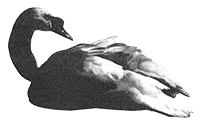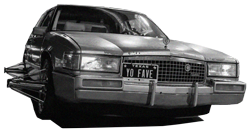If you were a young creative type and you were to ask me, "which city should I go live in to connect with like-minded artists and improve my craft?" I would not know the answer. Beyond that, I don't even think I could tell you if any cities are creating their own coherent cultural movements. I don't think this can be chalked up to my own ignorance, either.
Two things to get on the table at the beginning: I am not a cultural fatalist. I think the general trend towards IP and "content" is depressing, but I think there are plenty of good places to engage with the arts still available beyond our local movie theater chains. The second: at the risk of being accused of snobbery, I want to hold a rather loose distinction between art and commerce. Mostly to avoid the inevitable, "well if you want to be an actor, move to LA" retort. Hollywood as an industrial machine and Hollywood as a cultural idea are closely wound together, and yet there remains enough of a distinction between studios explicitly designed to sell tickets and the more insular goals of artists that an industry like Hollywood doesn't constitute an artistic movement.
Okay, so what if I wanted to create an artistic movement? More than that, what if I wanted to create a renaissance? How would I do that? First, I'd want to think a bit about some of the important conditions of past renaissances.
They're usually associated with a place. Sometimes that place is small, like a city, like Harlem in the 1920s and 1930s. Sometimes it's a whole country like England from the 15th to the 17th centuries. The comparisons beyond that are difficult to parse: there's an element of political and religious conflict that drives major works like The Weary Blues or Paradise Lost. The dominance of a dialect can sometimes signal an artistic revival. In England it was the southern dialect. In Harlem it was a whole range of cultural developments that broke from white cultural expectations and norms.
But these aren't the only two Renaissances. Japan's Heian period (794-1185) presided over a long period of political peace and stability with their poetry drawing much of its inspiration from Chinese literary forms. The artists of the rivaling Italian and Dutch Renaissances in the 17th Century frequently drew upon each others' works but produced art that was fundamentally distinct. This could be chalked up to a difference in the more Catholic and classical influences that are ubiquitous in the Italian visual culture of the time, as opposed to the starker art of the more Protestant Low Country. Or it could be something that operated on a more philosophical level. Italian paintings of the time often expressed a meaning that needed to be "read" as allegory or as emblem. Dutch paintings sought a different aim: to record a world in which meaning is not "read" but "seen."
So, still no smoking gun. No two Renaissances are the same. Let's try a different thought experiment, then. Let's try to create the perfect conditions for artistic thriving.
This city would have a great variety of cultural exchange, accessible arts education, meeting places for discussion and debate. Its population would be dense, it would have an expansive and prestigious collection of higher education institutions. It would have a lot of museums and a lot of rich people interested in art.
Someone much smarter than me has pointed out that a city like this looks a lot like a place like Los Angeles and not at all a place like Topeka, Kansas. The problem is that Topeka has produced a generation of acclaimed poets (Gwendolyn Brooks, Anne Boyer, Ben Lerner, Cyrus Console, and more), LA's poetry scene is, anecdotally, dismal. (This same person told me that in his very poetry reading he attended in LA someone just read his phone bill. That was it. That was his poem). Kansas produces poets, Los Angeles does not.
This points to what I think is an interesting observation: we know how to create conditions for healthy living, but we don't really know how to create conditions for art to flourish. They might not be at odds (it's extremely wrongheaded to assume then that way to create great art is to produce suffering), but they don't necessarily correspond, either.
This shouldn't obfuscate creativity as an embedded process of actual laboring and living. But it should at least inspire some humility in the face of something we can't snap our fingers and make happen. It could be that the creation of thriving artistic movements is a lot weirder and harder to predict than we could ever imagine. This says something interesting about creativity, that it can't be coaxed or forced, and frequently shows up unannounced and in surprising places.
A few stray observations about the present and technology.
- The internet has flattened our sense of time and space. It's created homogeneity in our physical world (see: why every hip, Instagram-able coffee place looks the same across the whole world). If our primary mode of contact is via Internet, would a future Renaissance even makes sense as a place-based phenomenon? Will physical places even have distinguishable cultures? Or are we having 6,000 Renaissances a day and they all happen on TikTok?
- To cut the low-hanging fruit first -- AI art doesn't constitute a Renaissance. Hito Seryl writes, "Visuals created by [machine learning] tools are statistical renderings… They converge around the average, the median; hallucinated mediocrity." It's kitschy and clever, but will it ever bring us something new?
- The return of the patronage economy is... interesting. If in the past there was a solid push to make sure artists didn't have respond to the whims of the market, this new patronage economy feels different. You either must be extremely ideologically aligned (a la Thiel bucks), or you have a crowd-funded podcast. Neither of those feels like a bestower of artistic freedom, more so the financial empowerment of people catering to niche communities online.



















